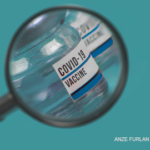
Phil Seo, MD, MHS
“It’s like winning Powerball.”
For months, there has been a steady trickle of questions from my patients, asking for my opinion about the new vaccines being developed to prevent COVID-19. More to the point, they want to know if they should be vaccinated.
After some fits and starts, I finally struck upon a pat answer that I liked: “It’s a little bit like asking me how you should spend the money you’re going to win by playing Powerball. There are more than 200 vaccines under development. Let’s just see what happens.”
Looks like that answer won’t cut it anymore.
On Nov. 16, Moderna announced the results of its COVE study, and the world, collectively, breathed a sigh of relief.
The COVE study examined the efficacy of the Moderna vaccine candidate at preventing COVID-19.1 More than 30,000 participants were enrolled, 95 of whom were subsequently diagnosed with COVID-19. All but five of those patients had received a placebo, indicating the vaccine was 94.5% effective at preventing patients from developing COVID-19. The most common, medically significant (i.e., Grade 3) adverse events were fatigue, myalgias and arthralgias, which are not all that surprising for a vaccine study.
On Nov. 18, Pfizer and BioNTech announced the results of the phase 3 study of their COVID-19 vaccine candidate.2 Of the 43,661 participants, 170 patients were eventually diagnosed with COVID-19. Only eight of those patients had received the vaccine, meaning it was 95% effective at preventing the disease. The most common medically significant adverse events were fatigue and headache, which again, seem like a small price to pay for immunity against SARS CoV-2.
On Nov. 23, AstraZeneca also came through with good news, sort of. Unlike the Moderna and Pfizer vaccines, which use mRNA to trigger an immune response, the AstraZeneca vaccine uses a modified adenovirus to deliver the goods.
When administered to 8,895 volunteers, the AstraZeneca vaccine was 62% effective at preventing COVID-19.3
That’s above the 50% efficacy threshold announced by FDA Commissioner Stephen Hahn as the minimum a vaccine would need to achieve to win FDA approval.4 And it is certainly better than 0%, which is the amount of protection that most of us currently have against COVID-19.
Fortunately, AstraZeneca made a mistake. The first 2,741 patients enrolled in the study received a lower dose of the vaccine than originally planned.5 Because the error was not felt to impact the vaccine’s safety, the study was allowed to continue. That was a truly brilliant decision, because it turns out that the lower dose of the vaccine was 90% effective at preventing COVID-19, which brings it in the ballpark of the other two vaccines.
Why the lower dose may be more effective than the higher dose is not clear. The most logical answer is that it is not. The difference may be the result of a statistical fluke, and it is possible that if the trial had continued to enroll patients, the difference may have eventually disappeared. If the difference is real, it might be that the higher dose stimulated a more robust response against the adenoviral vector itself, which prevented it from reaching its target.6
Even if the AstraZeneca vaccine is somewhat less effective than its brethren, it is hard to call it an inferior product. The Pfizer vaccine is a prima donna whose exacting requirements need to be met if we want her to perform: The vaccine needs to be stored at -70°C. Each vial contains five doses of the vaccine; each vial must be thawed, split and administered in short order to be effective.7
The AstraZeneca vaccine is a working grunt. Refrigerated, it is stable for a month; frozen at -20°C, it is stable for six months. Cheap to manufacture, easy to transport, it’s no wonder that many countries have turned to the AstraZeneca vaccine for salvation.8
Remembering that vaccine development in the past has taken years, or even decades of work, it is truly incredible that we now have three vaccines against a virus that none of us had heard of a year ago, with even more options on the way. But who goes first?
Remembering that vaccine development in the past has taken years, or even decades of work, it is truly incredible that we now have three vaccines against a virus that none of us had heard of a year ago, with even more options on the way. But who goes first?
Waiting Your Turn
Pity the poor souls who populate the Advisory Committee on Immunization Practices (ACIP); they could have never suspected their sleepy committee might be the center of so much attention. Established in 1964 by the U.S. Surgeon General, the ACIP is a committee within the Centers for Disease Control and Prevention that is responsible for making recommendations regarding vaccine-preventable diseases.9 The question of who should be vaccinated first falls squarely within their mandate.
On Dec. 1, the ACIP suggested a phased allocation of COVID-19 vaccine supplies.10 Not surprisingly, the committee suggests that first dibs should go to healthcare personnel and long-term healthcare residents. Together, these groups represent approximately 24 million people. To put this in perspective, by the end of 2020, Pfizer and Moderna will have supplied the U.S. with enough vaccine to vaccinate only 22.5 million people.11 And that’s just phase 1a.
In phase 1b, essential workers will take priority. This includes teachers, emergency responders, corrections officers and those who work in the food industry, agriculture, utilities and transportation, none of whom can avoid contact with other people. In phase 1c, priority will go to adults who are older than 65 years or have comorbid conditions that place them at risk for poor outcomes from COVD-19. Together, these phases represent another 250 million Americans. Again to put this in perspective, the U.S. government has currently purchased enough vaccine from Pfizer and Moderna to vaccinate 100 million Americans.12 Total.
What makes these decisions even more weighty is the implied ethical decisions. If we wish to limit mortality, the elderly should be vaccinated first. If we wish to limit disease spread, then vaccinating essential workers makes more sense. But people who work in childcare, elder care and public transportation have even higher rates of developing COVID-19 than other essential workers; shouldn’t they hop to the front the list?13 On the other hand, vaccinating teachers first may allow us to open schools earlier than would have been possible otherwise. The incarcerated pose a particularly sticky issue: It is impossible to socially distance in prison. Where should they fall in line?
There are also many unknowns: How effective will these vaccines be in immunocompromised or immunosuppressed patients? More specifically, will the RNA-based vaccines cause lupus patients to flare by inducing a type I interferon response? And how good are these vaccines at preventing the asymptomatic infections that are responsible for much of the pandemic? The AstraZeneca vaccine reduces SARS-CoV-2 RNA-positivity among asymptomatic patients, but what about the Moderna and Pfizer vaccines? We just don’t know.14
Of course, none of this may matter if no one agrees to get vaccinated.
In November, the Pew Research Center conducted a survey of 12,648 Americans and found that 60% would be willing to be vaccinated against SARS-CoV-2.15 In most ways, that’s good news. First, we assume that interest in the vaccine will climb as friends and neighbors continue to be hospitalized with COVID-19 in ever escalating numbers. Second, an additional 21% of those surveyed would probably be willing to receive the vaccine; they just want more information. And they want to see others go first. That brings us to 81%, which is around what we would need to achieve herd immunity; if four out of every five Americans agree to be vaccinated, we may be able to hamper the spread of SARS-CoV-2 just enough to tame the pandemic.
That still leaves 18%—59 million Americans—who have no interest in the vaccine. Who are these people, and can their minds be changed?
Trekkies & Trekkers
First, a lesson on nomenclature: anti-vaxxer is to vaccine hesitant as trekkie is to trekker. Both sets of terms refer to roughly similar groups of people, but there is nuance. The anti-vaxxers are the true believers; they will not be swayed by mere PowerPoint presentations. They will match you, slide for slide, with offbeat interpretations of questionable studies and nonsensical assertions of individual freedoms. They are like those who refuse to acknowledge the brilliance of Ricardo Montalbán’s performance in Star Trek II: Wrath of Khan. They are beyond hope or reason.
The vaccine hesitant comprise the reasonable reverse of the same coin. They do not doubt the science supporting the use of vaccines. They know that vaccines save lives. They’re just afraid. Or indifferent.16
The vaccine hesitant largely fall into three categories. The first is the hale and hearty, who largely think of COVID-19 as a problem for other people. They may even have friends who, also young and healthy, may have tested positive without ever having realized they were ill, which reinforces their viewpoint. The second category is ethnic minorities, who may not interact with the healthcare system on a regular basis or may bear some suspicion of organized healthcare, in general. The third category is the hyperinformed, the patients who show up to appointments with their Google searches and preprints, asking endless questions that have no good answer.
Sound like anyone you know?
I haven’t yet had many of these difficult conversations, but I know they are coming. And we should acknowledge they have a point. The history of vaccine rollouts has not been without tragedy. The worst example was the 1955 Cutter Incident, in which a manufacturing error allowed live polio to be mixed with the inactivated vaccine.17 The flawed vaccine sickened 40,000 children; 51 of these children were paralyzed, and five died. Even then, the company was not found to be negligent; a jury found it did the best it could with a novel, complex manufacturing process.
To reach the vaccine hesitant, we need to address their concerns head-on. For the unworried well, we need to convince them that getting vaccinated is an act of altruism, somewhere between running into a burning building and helping a little old lady cross the street. It is the young and healthy who are most likely to have an asymptomatic or minimally symptomatic infection, which they can unknowingly transmit to others. They may not benefit directly from the vaccine, but vaccination may prevent them from inadvertently infecting someone they love.
For the others, we should learn from D.A. Henderson’s example. More than anyone, Dr. Henderson is personally responsible for eliminating smallpox from Western and Central Africa.18 He said it was simple: He would travel to a village and gather everyone together so they could watch him and the local leader receive the vaccine. He was vaccinated hundreds of times, convincing village after village to accept the smallpox vaccine by this simple act.
Following in this model, former Presidents Bush, Clinton and Obama have all agreed to be vaccinated publicly, to try to convince others to follow suit.19 Having the cameras rolling as Steph Curry and Beyoncé received the vaccine would be even better. But it won’t be enough. Like Henderson’s experience with smallpox, the battle against COVID-19 will need to be fought village by village, by convincing local leaders to lead by example.
This is where you come in. Each of you is a local leader, whether or not you see yourself in that way. Those around you will look to you and the example you set. This is a difficult position to be put in, since we, better than most, understand the risks of a new vaccine. But the nation needs our help. We are tantalizingly close to an end to this nightmare. We just have to roll up our sleeves—literally!—and give everyone a push in the right direction.
Philip Seo, MD, MHS, is an associate professor of medicine at the Johns Hopkins University School of Medicine, Baltimore. He is director of both the Johns Hopkins Vasculitis Center and the Johns Hopkins Rheumatology Fellowship Program.
References
1. Moderna’s COVID-19 vaccine candidate meets its primary efficacy endpoint in the first interim analysis of the phase 3 COVE study [press release]. Moderna. 2020 Nov 16.
2. Vaccines and related biological products advisory committee meeting. FDA briefing document. Pfizer-BioNTech COVID-19 vaccine. 2020 Dec 10.
3. Voysey M, Costa Clemens SA, Madhi SA, et al. Safety and efficacy of the ChAdOx1 nCoV-19 vaccine (AZD1222) against SARS-CoV-2: An interim analysis of four randomised controlled trials in Brazil, South Africa, and the UK. Lancet. 2020 Dec 8. Online first.
4. Burton TM. FDA to require proof virus vaccine is effective before approving its use. The Wall Street Journal. 2020 Jun 30.
5. Roberts M. Oxford/AstraZeneca Covid vaccine ‘dose error’ explained. BBC News. 2020 Nov 27.
6. Callaway E. Why Oxford’s positive COVID vaccine results are puzzling scientists. Nature. 2020 Nov 23.
7. Miller E, Lemire J. Trump administration passed up chance in summer to buy millions of additional doses of Pfizer’s COVID-19 vaccine. Chicago Tribune. 2020 Dec 8.
8. Arora N, Bhattacharjee N. India speeding up review of Pfizer, AstraZeneca COVID-19 vaccines: Senior official. Reuters. 2020 Dec 6.
9. Smith JC, Hinman AR, Pickering LK. History and evolution of the Advisory Committee on Immunization Practices—United States, 1964–2014. MMWR. 2014 Oct 24;63(42);955–958.
10. ACIP Presentation Slides: December 2020 Meeting. Centers for Disease Control and Prevention. 2020 Dec 1.
11. LaFraniere S, Thomas K, Weiland N. Trump administration passed on chance to secure more of Pfizer vaccine. The New York Times. 2020 Dec. 7.
12. McGinley L, Abutaleb Y, Johnson CY. Pfizer tells U.S. officials it cannot supply substantial additional vaccine until late June or July. The Washington Post. 2020 Dec 8.
13. Mutambudzi M, Niedwiedz C, MacDonald EB, et al. Occupation and risk of severe COVID-19: prospective cohort study of 120 075 UK Biobank participants. BMJ. 2020 Dec 9. Online first.
14. Knoll MD, Wonodi C. Oxford–AstraZeneca COVID-19 vaccine efficacy. Lancet. 2020 Dec 8. Online first.
15. Funk C, Tyson A. Intent to get a COVID-19 vaccine rises to 60% as confidence in research and development process increases. Pew Research Center. 2020 Dec 3.
16. Hinsliff G. It’s the ‘vaccine hesitant,’ not anti-vaxxers, who are troubling public health experts. The Guardian. 2020 Nov 16.
17. Ruane ME. The tainted polio vaccine that sickened and fatally paralyzed children in 1955. The Washington Post. 2020 Apr 14.
18. DG McNeil Jr. DA Henderson, doctor who helped end smallpox scourge, dies at 87. The New York Times. 2016 Apr 21.
19. Diaz J. Obama, Bush, Clinton say they’re willing to get Coronavirus vaccine on camera. 2020 Dec 3. NPR. KQED.



